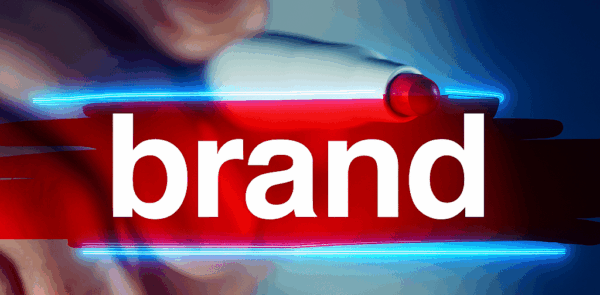
Jump to a section:
In today’s competitive business environment, saturated markets present unique hurdles where numerous brands vie for the same audience’s attention, making it essential to master marketing differentiation techniques. We recognize that in these crowded spaces, consumers face an overload of similar offerings, leading to decision fatigue and price-based choices. By employing effective saturated market strategies, businesses can carve out a distinct position, transforming potential challenges into avenues for growth and customer loyalty.
This year, market saturation has intensified across industries, with over 80% of sectors reporting increased competition that squeezes margins and demands innovation. Statistics indicate that in saturated markets, brands without clear differentiation experience up to 40% higher churn rates, as customers easily switch to alternatives. We advise starting with a thorough market analysis to identify gaps, using digital tools like analytics platforms to uncover consumer pain points and unmet needs that your brand can address uniquely.
To delve deeper, consider the economic factors fueling saturation. Rapid digital adoption has lowered entry barriers, allowing startups to flood markets quickly, while globalization exposes local businesses to international rivals. This results in commoditization, where products appear interchangeable, reducing perceived value. However, we see tremendous potential in leveraging digital marketing to highlight nuances, such as through targeted content that educates audiences on your brand’s superior attributes, fostering emotional connections that transcend price comparisons.
Furthermore, consumer behavior in saturated markets leans toward authenticity and personalization, with 70% of buyers preferring brands that align with their values over cheaper options. We emphasize integrating these insights into your strategy, perhaps by conducting surveys or social listening to refine your positioning. This proactive stance not only mitigates the risks of blending in but also positions your brand as a leader, ready to capitalize on emerging trends like sustainability or tech integration.
| Metric | Value | Insight |
|---|---|---|
| Competition Increase | 80% of sectors | Heightened rivalry |
| Churn Rate Without Differentiation | Up to 40% | Higher customer loss |
| Value-Aligned Preference | 70% of buyers | Authenticity drives choice |
Market Analysis Essentials:
- Consumer Insights: Use surveys to identify preferences.
- Competitor Review: Analyze rivals’ positioning gaps.
- Digital Tools: Leverage analytics for data-driven decisions.
The Importance of Brand Differentiation
Brand differentiation stands as a cornerstone for success in saturated markets, enabling your business to stand out by emphasizing unique attributes that resonate with target audiences. We believe this not only combats commoditization but also builds a moat against competitors, enhancing customer retention and pricing power. Through strategic marketing differentiation, brands can command premiums, with differentiated companies often achieving 3.5 times faster growth than peers.
This year, the benefits are evident: differentiated brands enjoy 25-95% higher profits from improved loyalty, as customers become advocates who amplify your message organically. We guide clients to focus on core differentiators like innovation or service excellence, integrating these into digital narratives that cut through the noise on social media and search engines.
Diving further, differentiation fosters emotional loyalty, where customers feel a personal connection, leading to 30% higher referral rates. In crowded markets, this translates to reduced marketing costs, as word-of-mouth supplants expensive ads. Additionally, it provides resilience during economic shifts, with differentiated brands weathering downturns better by maintaining perceived value.
Another critical aspect is competitive positioning. Without differentiation, businesses risk price wars that erode margins, but by highlighting unique stories—such as heritage or sustainability—you create barriers to imitation. We observe that brands excelling here see 18% better perception scores, directly impacting online engagement and conversion rates in digital campaigns.
| Benefit | Impact | Outcome |
|---|---|---|
| Growth Rate | 3.5x faster | Than non-differentiated |
| Profit Increase | 25-95% | From loyalty |
| Referral Boost | 30% | Organic amplification |
| Perception Improvement | 18% | Better brand image |
Differentiation Core Focus Areas:
- Unique Attributes: Emphasize innovation or quality.
- Emotional Connections: Build through storytelling.
- Resilience Building: Protect against market shifts.
This foundation of differentiation not only sustains but accelerates business momentum in challenging environments.
Key Differentiation Techniques for Marketing
Employing key differentiation techniques allows brands to stand out effectively in saturated markets, focusing on aspects like product features, customer experience, and innovative messaging. We start with value proposition crafting, where clarifying your unique selling points—such as superior quality or ethical sourcing—sets the tone for all marketing efforts. For example, brands like Patagonia differentiate through sustainability, appealing to eco-conscious consumers and driving loyalty.
Another powerful technique is niche targeting, honing in on underserved segments to build deep connections. This year, businesses using this see 20-30% higher engagement rates, as tailored content resonates more. We recommend leveraging digital tools for precise audience segmentation, creating campaigns that speak directly to specific needs, like specialized services for small businesses in a broad market.
Going in-depth, storytelling emerges as a vital method, weaving your brand’s heritage or mission into compelling narratives shared via blogs or videos. Companies like Apple excel here, positioning products as lifestyle essentials rather than gadgets. This emotional differentiation boosts recall by 22%, enhancing shareability on social platforms.
Innovation in service delivery offers another avenue, such as offering personalized experiences through AI-driven recommendations. Examples include Netflix’s algorithm, which keeps users engaged longer. We also highlight community building, fostering user groups or events that create belonging, with participants 50% more likely to advocate for the brand.
Finally, visual identity plays a role, with distinctive designs cutting through visual clutter. Brands like Coca-Cola use iconic elements to maintain recognition. By combining these techniques with digital amplification, you create a multifaceted strategy that ensures your brand wins in saturated arenas.
| Technique | Engagement Boost | Example Brand |
|---|---|---|
| Niche Targeting | 20-30% | Specialized services |
| Storytelling | 22% recall | Apple |
| Community Building | 50% advocacy | User events |
Practical Technique Applications:
- Value Proposition: Highlight ethical aspects.
- Personalization: Use AI for custom experiences.
- Visual Identity: Develop iconic designs.
Overcoming Challenges in Implementing Differentiation
Implementing differentiation in saturated markets comes with challenges, such as resource constraints and maintaining authenticity amid competition. We address these by prioritizing scalable digital solutions that allow even small teams to execute effectively, like automated content tools for consistent messaging.
One common hurdle is innovation fatigue, where constant pressure to differentiate leads to burnout. This year, 40% of marketers report difficulties in sustaining unique ideas, often due to market copycats. We suggest regular audits to refresh strategies, incorporating customer feedback to ensure relevance and originality.
Exploring further, budget limitations pose issues, with differentiation efforts potentially increasing costs by 15-20% initially. However, the long-term ROI, including 3.5x growth, justifies the investment. We recommend starting with low-cost digital tactics, like user-generated content campaigns that leverage community creativity without heavy spending.
Authenticity risks arise when differentiation feels forced, alienating audiences. Examples include brands overhyping claims, leading to backlash. We advocate for alignment with core values, using transparent storytelling to build trust. Additionally, measuring impact through metrics like engagement helps iterate, overcoming implementation pitfalls for enduring success.
| Challenge | Prevalence | Solution Approach |
|---|---|---|
| Innovation Fatigue | 40% of marketers | Regular audits |
| Cost Increase | 15-20% | Low-cost digital |
Challenge Mitigation Steps:
- Feedback Integration: Use for authenticity checks.
- Scalable Tools: Automate for efficiency.
Measuring Success of Differentiation Efforts
Measuring the success of differentiation techniques involves tracking key metrics that reflect market position and customer response, ensuring your strategies deliver tangible results. We focus on indicators like brand awareness lifts, often measured through surveys showing 20-30% improvements post-campaign.
This year, effective differentiation correlates with 25-95% profit increases from enhanced loyalty. Monitor engagement rates on digital channels, where differentiated content sees 30% higher interactions. We use tools like Google Analytics to assess traffic sources and conversion uplifts, providing insights into strategy efficacy.
In more detail, customer acquisition cost reductions signal success, as unique positioning attracts ideal leads more efficiently. Track net promoter scores, aiming for rises of 20 points, indicating stronger advocacy. Competitive share analysis reveals if your differentiation erodes rivals’ hold, with successful brands gaining 10-15% market share annually.
Iterate based on data, adjusting techniques quarterly to maintain edge. This ongoing evaluation ensures your marketing in saturated markets remains dynamic and impactful.
| Metric | Expected Improvement | Tracking Method |
|---|---|---|
| Brand Awareness | 20-30% | Surveys |
| Engagement Rates | 30% | Analytics |
| Market Share Gain | 10-15% | Competitive analysis |
Evaluation Best Practices:
- Metric Monitoring: Use digital dashboards.
- Quarterly Reviews: Adjust based on data.
- Customer Feedback: Incorporate for refinements.
Conclusion
Differentiation techniques in saturated markets empower brands to stand out, win customer hearts, and achieve sustainable growth through innovative positioning and targeted strategies. The Linchpin team specializes in digital marketing and strategy, assisting businesses with customized differentiation plans that leverage SEO, content, and analytics to highlight unique value propositions. We work alongside you to overcome challenges, implement effective tactics, and measure success for lasting competitive advantage.
If you need help with marketing in saturated markets, contact the Linchpin team today to develop a standout strategy tailored to your brand.


